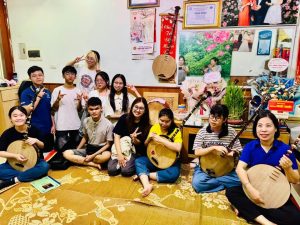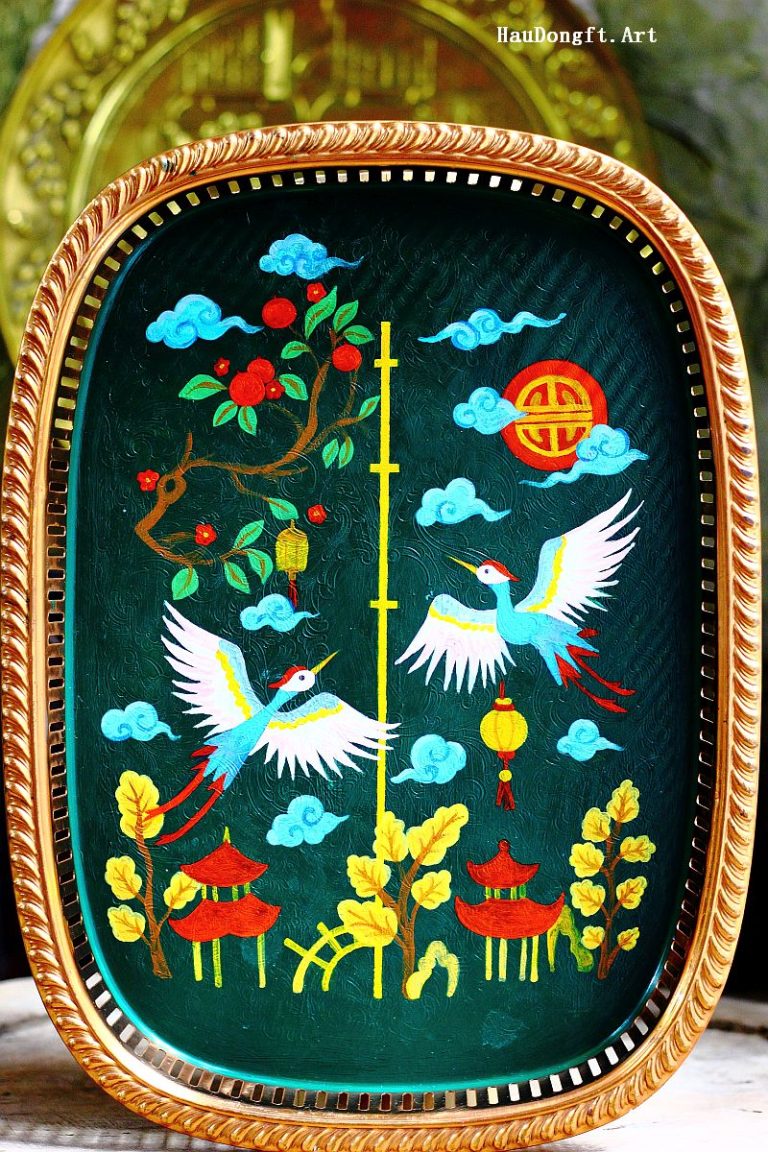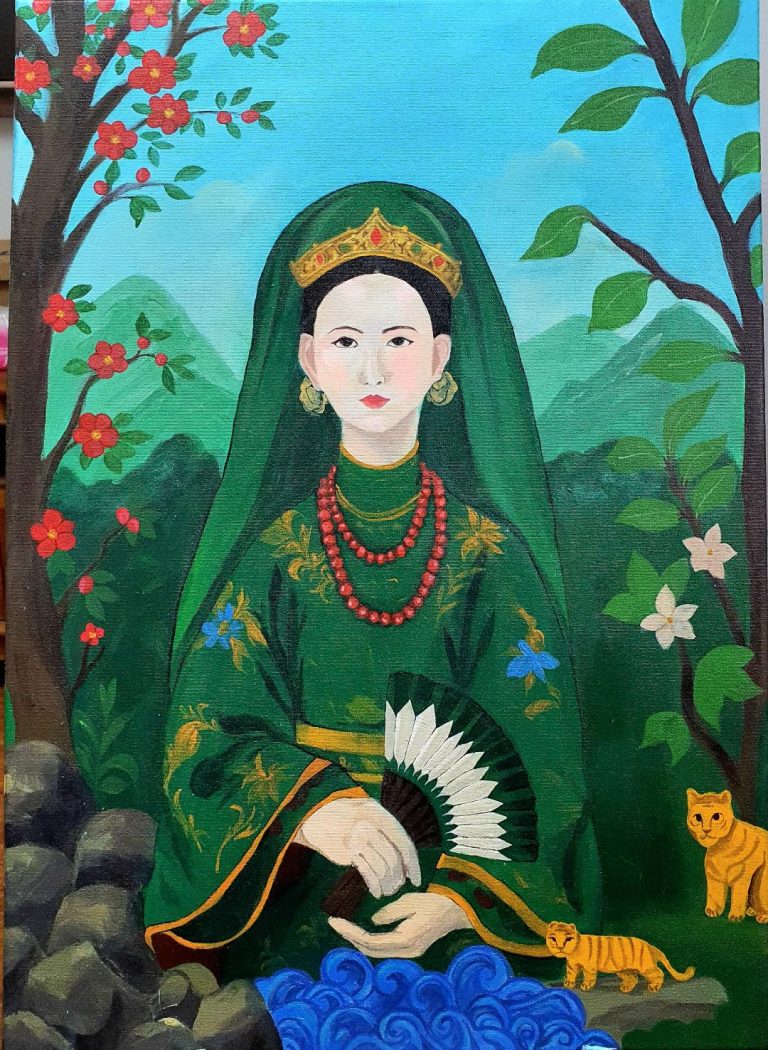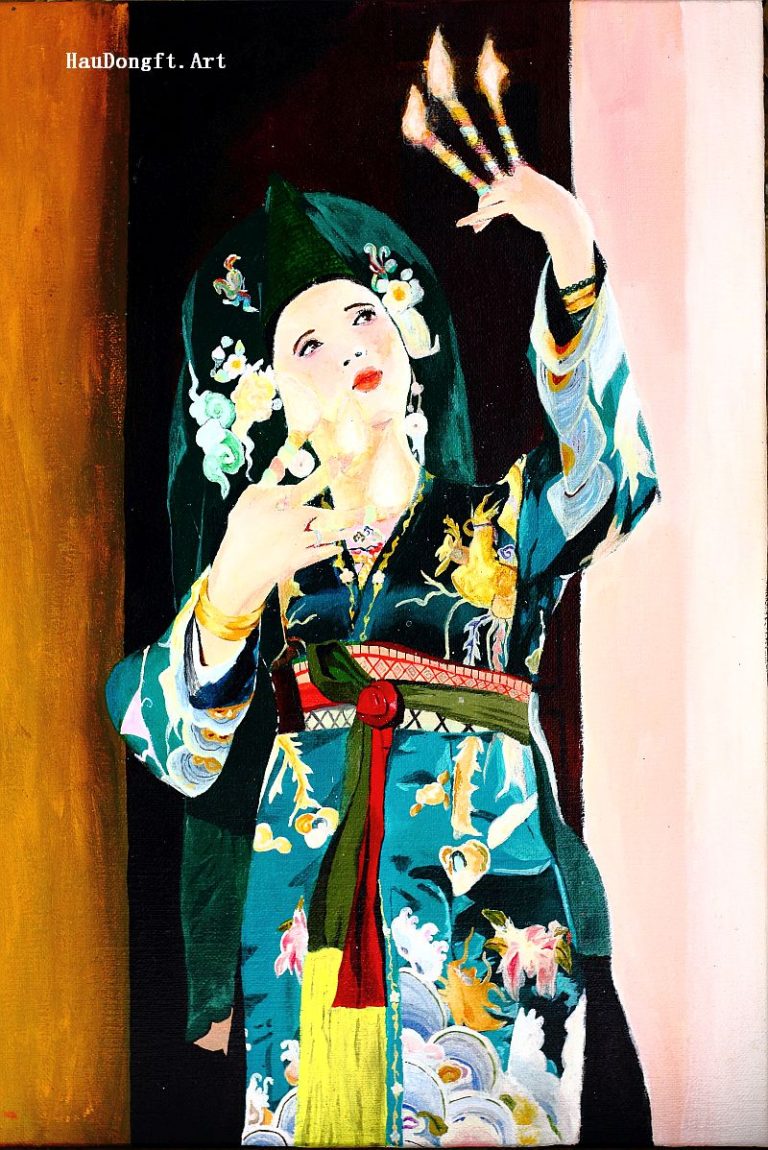Introduction
The ritual practice of lên đồng—also known as hầu bóng or đồng bóng—is a prominent feature of the Vietnamese Đạo Mẫu (Mother Goddess worship) and Tứ phủ (Four Palaces) belief system. It represents a distinctive form of folk spirituality, where music (hát chầu văn), dance, and ritual gesture converge to facilitate communication with deities. Rooted in the Red River Delta and flourishing in the late nineteenth and early twentieth centuries (Ngô Đức Thịnh, 2001), lên đồng embodies both a religious act and a highly aestheticized performance.
This paper examines the role of music and dance within the ritual structure of lên đồng, analyzing their symbolic functions, aesthetic dimensions, and contribution to the cultural heritage of Vietnam.
Ritual Context
At its core, lên đồng is a shamanistic ritual wherein mediums (thanh đồng) serve as vessels for divine descent. It is believed that deities temporarily inhabit the bodies of mediums, granting blessings, healing, or counsel to the community (Norton, 2009). During the ritual, the medium transcends their human identity and becomes the embodiment of the deity.
The ritual space functions simultaneously as sacred and performative: directed toward deities while also witnessed by devotees and observers. Success depends on the seamless coordination of musicians (cung văn) with the medium’s signals, adjusting tempo and melody to match the stages of trance possession.
Music in the Ritual
Music—especially hát văn—is indispensable to lên đồng. Performed by the cung văn ensemble, it not only frames the ritual but also induces altered states of consciousness. A standard ensemble includes the đàn nguyệt (moon lute), đàn nhị (two-string fiddle), small drum, cymbals (cảnh), and clappers (phách). Larger ceremonies may add the trống cái (large drum), chiêng (gong), and wind instruments such as the sáo (flute) or tiêu (bamboo flute).
Musical progression typically begins with Văn Thờ—solemn hymns inviting the deities—followed by Văn Hầu, praising the merits of the spirit once possession occurs. Later stages employ more energetic forms such as Hát Dọc and Điệu Còn, raising emotional intensity and deepening the trance. Distinct rhythmic patterns (nhịp một, nhịp đôi, nhịp ba) and free rhythms (Điệu Bỉ, Thỉnh Bóng, Trống Chiến) are used to suit each spirit’s identity.
Thus, hát văn is simultaneously music, prayer, and narrative: it recalls mythic legends, praises heroic deeds, and guides the medium’s embodiment of diverse spiritual personas.

Me & our fellow artists with our instructors in a moon lute workshop
Dance in the Ritual
Dance in lên đồng is inseparable from music and varies according to the character of each deity:
Mandarins (Quan Lớn): martial dances with flags, swords, or halberds.
Dames (Chầu Bà): elegant fan or torch dances.
Princes (Ông Hoàng): dynamic scarf or sword dances.
Maidens (Cô): visually striking performances such as fan dances, flower dances, boat-rowing, or embroidery.
Pages (Cậu): playful and mischievous movements, including lion or stick dances.
Each dance corresponds to a particular musical mode. Martial dances pair with vigorous rhythms (lưu thủy, phú dồn), while floral or fan dances employ lighter melodies (xá). The choreography is thus inseparable from musical structure, forming an integrated performance system.
Performance Aesthetics
Scholars emphasize the transformative quality of lên đồng. According to Norton (2009), music facilitates possession by reshaping the medium’s consciousness, enabling transitions across boundaries of gender, identity, and ethnicity. Folklorist Thuận Phước (1997) further asserts that hầu bóng is a composite art form, creating a sacred theatrical space that cannot be reduced to isolated elements of melody, lyrics, or movement.
Unlike scripted theater, lên đồng is characterized by flexibility: the length and intensity of each sequence depends on the medium’s trance state and the ritual context. The stage becomes both an altar and a theater, merging spirituality with spectacle, devotion with artistry.
Conclusion
The interplay of music and dance in lên đồng reflects not only ritual efficacy but also the aesthetic imagination of Vietnamese agrarian culture. Whereas nomadic traditions often emphasize mastery over nature, Vietnamese agrarian spirituality transforms natural life into symbolic and sacred expression.
Ultimately, lên đồng offers a holistic cultural experience: a synthesis of music, dance, narrative, costume, and ritual. It immerses participants and observers in an atmosphere of transcendence, affirming continuity with ancestral traditions while adapting to modern cultural life. As both religious practice and cultural performance, it constitutes a living museum of Vietnamese intangible heritage.











